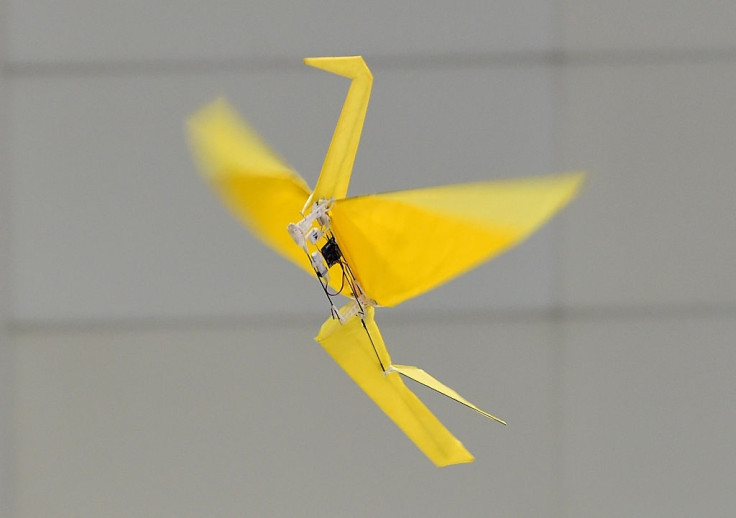Harvard's origami-inspired folding robot can run without battery or wired power source
The robot is powered by a wireless electromagnetic field.

A team of researchers at the Harvard John A Paulson School of Engineering and Applied Sciences (SEAS) and the Wyss Institute for Biologically Inspired Engineering has created battery-free folding robots that can perform complex, repeatable movements using electromagnetic power transmission and resonance.
Inspired by the ancient Japanese art of origami, these folding robots can be introduced in hard-to-reach environments to perform complex movements by changing their physical configuration. Unlike traditional folding bots limited by bulky batteries, the new ones are highly functional and just as light as their paper inspiration.
"Like origami, one of the main points of our design is simplicity," says co-author of the study Je-sung Koh. "This system requires only basic, passive electronic components on the robot to deliver an electric current - the structure of the robot itself takes care of the rest."
These flat, thin bots are plastic tetrahedrons, consisting of three outer triangles connected to the central triangle – carrying a small circuit board – by a hinge. The hinges are attached to a metallic material called shape-memory alloy, which contracts like a tiny muscle, folding the robots' outer triangles in towards the centre when current is passed through it and vice versa.
Powering origami robots
"The power that creates the electrical current needed for the robots' movement is delivered wirelessly using electromagnetic power transmission," the study reported in Science Robotics notes.
"An external coil with its own power source generates a magnetic field, which induces a current in the circuits in the robot, thus heating the SMA coils and inducing folding." The coils can also contract independently on demand when hit with varying levels of magnetic resonance frequencies.
The team at Harvard demonstrated the capabilities of the folding robot by creating a small robotic arm with a special origami-like pattern. The arm, controlled by different electromagnetic frequencies, could bend left and right while opening and closing a gripper around an object.
Room for miniaturisation
While origami robots are still at a nascent stage of evolution, the team hopes to develop the minimalist approach for industrial, consumer and medical applications. For instance, swallowable micro-robots could offer an answer to an invasive endoscope by performing simple tasks such as holding tissues or filming, while being controlled from outside.
"There is still room for miniaturisation," said lead researcher and roboticist Mustafa Boyvat. "We don't think we went to the limit of how small these can be, and we're excited to further develop our designs for biomedical applications".
Scientists have been working on the origami robot technology for quite a while. Last year, researchers at MIT created a radio-controlled origami robot for healthcare purposes. The tiny device, which contained a magnet, could be steered inside the body using magnetic fields to pick up foreign objects or repair internal injuries.
© Copyright IBTimes 2024. All rights reserved.





